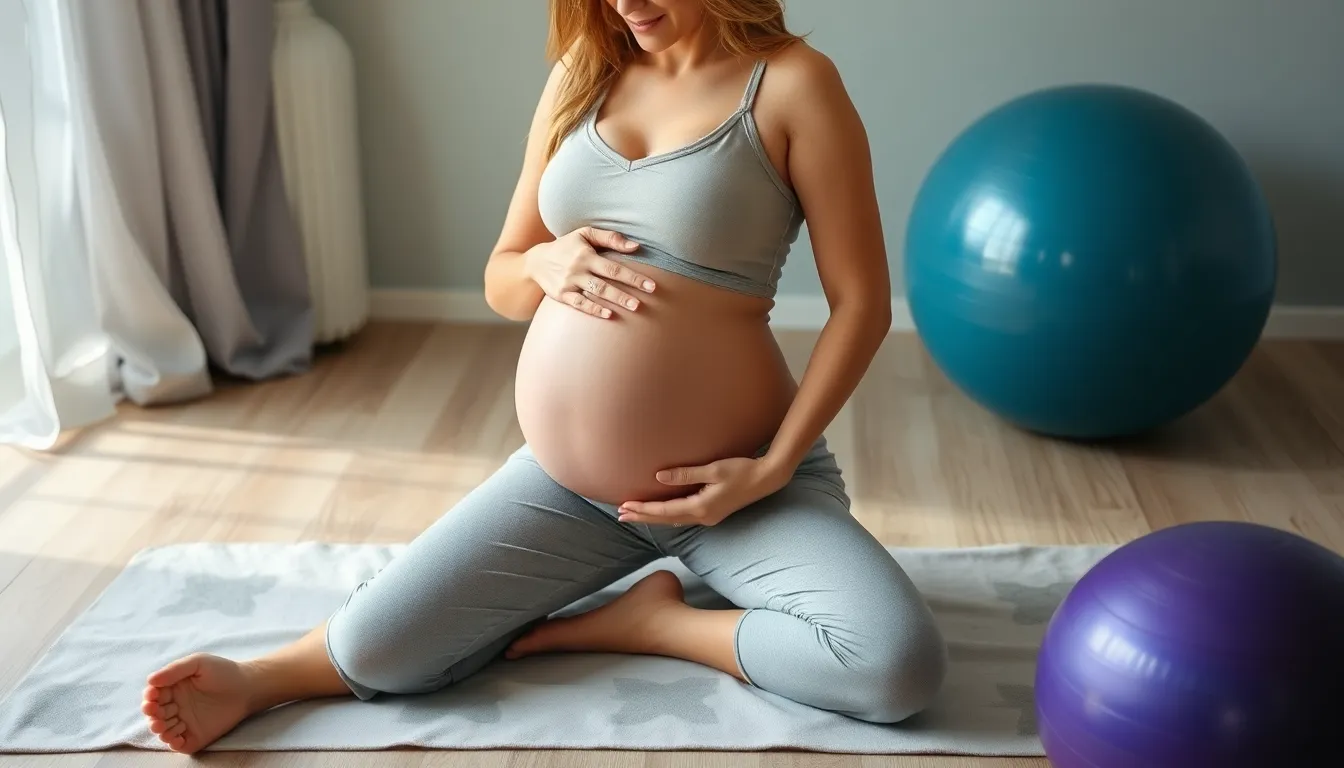When it comes to labor, finding the right position can make all the difference between a smooth ride and a bumpy road. Think of it like trying to get comfortable on a long flight—some positions just work better than others. With a little creativity and a dash of humor, expectant parents can discover birthing positions that not only ease the process but also add a touch of fun to the experience.
From squatting like a pro to lounging like a queen, the options are endless. Each position can help open the pelvis, reduce discomfort, and even encourage baby to make their grand entrance. So why not explore these positions and turn labor into a memorable adventure? After all, every superhero needs a good strategy, and this one might just earn a few laughs along the way.
Table of Contents
ToggleImportance Of Birthing Positions
Finding the right birthing positions significantly influences labor outcomes. Various positions can enhance comfort and support effective contractions. Standing, kneeling, and squatting positions allow gravity to aid in the baby’s descent. Reducing pelvic tension often becomes easier with these choices.
Additionally, certain positions help widen the pelvis. Women may find that leaning forward or side-lying provides relief and encourages better alignment of the baby. Embracing movement during labor promotes flexibility and prevents fatigue.
Creative approaches to birthing positions can lead to a more positive experience. Expectant parents often discover that experimenting with different stances builds confidence and reduces anxiety. Using tools like birthing balls or stools enhances adaptability and engagement with the process.
Support from partners is crucial when exploring various positions. Encouragement and assistance can make a notable difference, helping maintain comfort and resolve during labor. The shared experience fosters a deeper connection between parents, creating an empowering atmosphere.
Remembering that each labor is unique, flexibility remains vital. Tailoring positions to personal preferences ensures a more enjoyable experience. Expectant parents benefit from open communication with healthcare providers about the significance of birthing positions, leading to informed choices. Overall, understanding the importance of various stances contributes to a memorable and less stressful labor journey.
Types Of Birthing Positions

Selecting the right birthing position can greatly impact labor. Various positions accommodate comfort and facilitate the baby’s arrival.
Upright Positions
Upright positions include standing, walking, and squatting. These stances utilize gravity to help move the baby down the birth canal. Many expectant parents find that standing provides relief from pressure. Squatting stretches the pelvic muscles, often improving the opening for the baby. Walking encourages movement and plays an essential role in active labor. Partner support during these times enhances comfort and boosts confidence. Utilizing a birthing ball while in an upright stance can provide additional stability.
Reclining Positions
Reclining positions involve lying back, often on a bed or other surface. This setup allows for easier monitoring by healthcare providers while providing some comfort. Leaning against pillows can help relieve pressure on the back. Many parents find the semi-reclined position offers good support for relaxation. Opting for side-lying positions can reduce strain and enhance blood flow, delivering benefits to both the parent and baby. Adjusting body angles can aid in finding relief during contractions.
All Fours Position
The all fours position involves getting on hands and knees, promoting movement and flexibility. This stance can relieve back pressure and open the pelvis wider. Many find this position helps alter the baby’s position for a smoother descent. Alternating between rocking back and forth may contribute to improved contractions. All fours can also encourage the baby to rotate into an optimal position. Each movement in this position fosters comfort and allows for more control during labor.
Benefits Of Each Position
Various birthing positions offer significant benefits during labor. Each choice enhances comfort and supports effective labor management.
Comfort During Labor
Upright positions often alleviate pressure on the back and pelvis, allowing for better comfort during contractions. Side-lying positions reduce strain, creating a more restful experience. Squatting opens the pelvis wider, which can ease the sensation of labor. Additionally, the all fours position promotes natural movement, helping women find relief as they navigate their labor journey. Using birthing balls or stools further increases comfort by providing support and stability.
Impact On Labor Duration
Certain positions can positively affect labor duration. Upright positions, like standing or walking, harness gravity to speed up the baby’s descent. Research indicates that women utilizing these positions experience shorter labors compared to those in reclined settings. Kneeling also enhances contractions by aligning the baby more effectively, potentially reducing overall labor time. Effective movement during labor contributes to quicker progress, allowing expectant parents to reach their goals sooner.
Fetal Positioning
Optimal fetal positioning directly correlates with successful labor outcomes. Positions that encourage pelvic openness, such as squatting and lunging, promote better alignment for the baby. All fours positions help rotate the baby into a favorable position, alleviating back pressure for the mother. Leaning forward while on a birthing ball or chair encourages the baby to settle more deeply into the pelvis, aiding in descent. These strategic positions facilitate a smoother pathway for the baby’s arrival.
Factors To Consider When Choosing A Position
Selecting an optimal birthing position significantly impacts comfort and labor progression. Expectant parents should weigh various factors to find the best fit for their needs.
Personal Preference
Personal comfort plays a crucial role in choosing a birthing position. Every person has unique preferences regarding what feels best during labor. Some may find relief in upright positions, while others might lean towards reclining stances. Testing different positions allows for discovering what works effectively, fostering a sense of control. Engaging with partners can also enhance confidence, as shared experiences create a supportive environment. It’s vital to remain open to experimentation, as shifting preferences may arise throughout labor.
Medical Conditions
Medical conditions influence the selection of birthing positions. Certain health issues may restrict movement or dictate specific stances for safety. For instance, conditions like gestational diabetes might require closer monitoring, which could affect preferred positions. Discussing individual health conditions with healthcare providers ensures alignment with best practices. Customizing positions to accommodate any medical concerns leads to both safety and comfort. An informed approach allows for choices that promote effective labor responses while prioritizing the well-being of both mother and baby.
Exploring various birthing positions can transform the labor experience into a more manageable and enjoyable journey. By embracing movement and flexibility expectant parents can discover what feels best for them. The support of partners and open communication with healthcare providers further enhances this process.
Each labor is unique and finding the right position can significantly impact comfort and outcomes. With the right approach and mindset labor can become a memorable adventure rather than a daunting challenge. Prioritizing personal preferences while remaining adaptable can lead to a smoother transition into parenthood.








